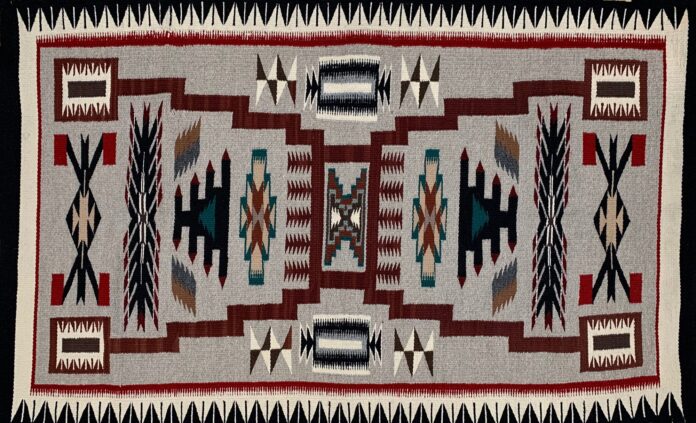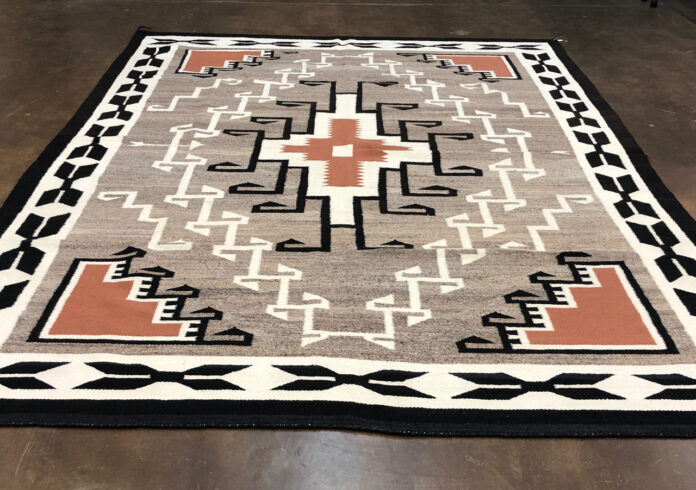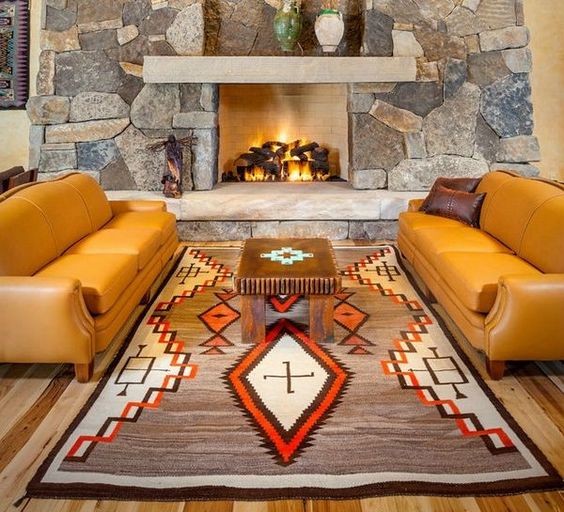Transitional Navajo rugs occupy a special place in the history of Native American weaving. These rugs represent a time when Navajo textile traditions underwent significant change and innovation.
The production of these rugs began in the latter half of the 19th century and continued into the early 20th century. They represent a transitional era between the indigenous weaving traditions of the Navajo people and the entrance of commercial dyes, designs, and materials.
Both culturally and historically, transitional Navajo rug possess tremendous significance. This is because they illustrate Navajo weaving traditions’ dynamic growth and enduring impact. Despite the relatively brief production era, transitional Navajo rugs hold immense importance.
Origins and Evolution

Several causes can be given to the transition phase in Navajo weaving. These elements include growing interaction with Euro-American traders, the availability of commercial materials, and evolving socioeconomic dynamics.
Before the late 19th century, Navajo weavers generally used natural materials, such as hand-spun wool and vegetable dyes, to create textiles for personal and commercial use.
On the other hand, the emergence of trading posts and the introduction of synthetic dyes ushered in a period of experimentation and creativity, ultimately resulting in the development of the distinctive style of transitional Navajo rugs.
Characteristics and Aesthetics
A combination of traditional Navajo design elements and the aesthetic influences of Euro-American architecture characterizes transitional Navajo carpets.
Most of the time, these carpets are depicted in synthetic dyes such as aniline reds, greens, and purples, and they often include detailed motifs, vivid colors, and striking geometric patterns.
Transitional carpets may integrate new design elements, such as pictorial scenes, floral motifs, and border patterns influenced by Oriental rugs. Traditional motifs, such as diamonds, crosses, and serrated borders, continue to be expected in transitional rugs.
Transitional rugs served as both utilitarian objects and expressions of cultural identity, embodying the resilience, creativity, and ingenuity of the Navajo people during a period of profound change.
Legacy and Collectibility

Even though they were only produced briefly, transitional Navajo rugs are precious and collectible among art collectors, historians, and enthusiastic lovers.
The creation of these carpets marks a significant turning point in the history of Navajo weaving. They represent the intersection of tradition and invention and the beginning of a distinctive weaving style.
In today’s world, transitional Navajo carpets are highly sought after because of their historical relevance, artistic value, and cultural resonance. As a result, they attract premium prices in the art market and museum collections worldwide.
Conclusion
To summarize, transitional Navajo carpets are a heritage that exemplifies the Navajo weaving traditions’ capacity for change, inventiveness, and perseverance.
These carpets, which serve as physical reminders of Navajo history, represent a time when there was cultural interaction, adaptation, and inventiveness.
Through the recognition of the value of transitional Navajo rugs and the preservation of their legacy, we can acquire a more profound comprehension of Navajo culture, history, and artistic expression.
This, in turn, enhances our appreciation for these magnificent textiles and their continuing impact on the world of weaving art.







